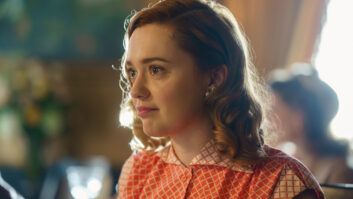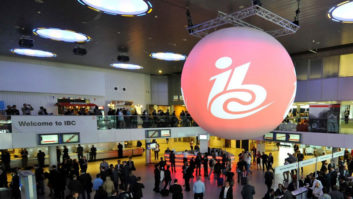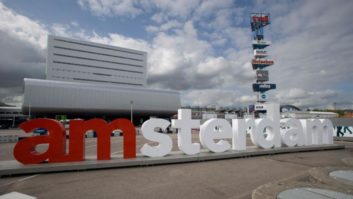Vine FX is cementing its reputation in compositing and water-focused effects. Fresh from its notable creation of stormy seas in Boat Story, its latest work sees it play a crucial role in a mystery thriller set in a town hit by a devastating flood.
In the six-part ITV drama, After the Flood, Sophie Rundle portrays Joanna Marshall, a PC fixated on an ostensibly benign flood fatality. Police attribute an unidentified man’s demise in a submerged lift to rising waters, but Joanna questions the circumstances, pondering his mysterious presence and anonymity.
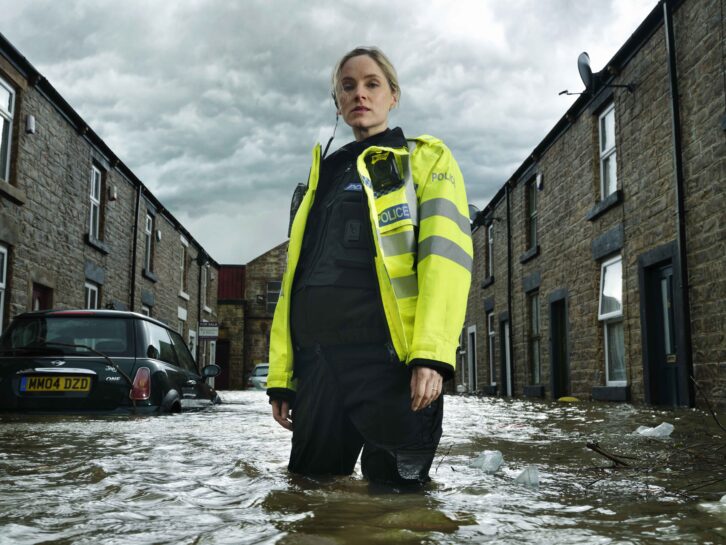
The titular flood scenes were shot at Tees Barrage, a specialised white water rafting facility in Stockton. With the capacity to pump 14,000 litres of water per second through an international standard course, it provided the perfect backdrop.
Standout among shots that received the VFX treatment is a drone pull-out above the flooded village. Part of this dramatic reveal was achieved in-camera, with the production building and filling an enormous water tank and placing building facades around its edge. But the rest was realised with CGI.
“We took the drone footage and ran it through Reality Capture photogrammetry software,” explains Matt McKinney, senior 3D generalist at Vine FX. “That gave us a starting point – a sort of virtual set – and we built 3D geometry around it. The plate from production was like how they used to shoot Westerns – building facades with nothing behind them. We masked out the tank and built an entire town around it in 3D geometry.”
To enhance the realism of CG elements, Vine FX applied textures derived from the drone footage, projecting real world buildings onto the geometry in Maya, blending pre-existing overcast lighting for a cohesive visual outcome.
It wasn’t as easy as it sounds. “The water in the wider shot is interesting,” adds Jake Newton, senior 3D generalist at Vine FX. “It didn’t really call for a full simulation, so we used Maya to generate animated vector maps to create the water surface. You get this really nice, believable texture without having to render out an overly detailed simulation. It’s all about efficiency and making sure that you do what’s needed for the scene at hand.”
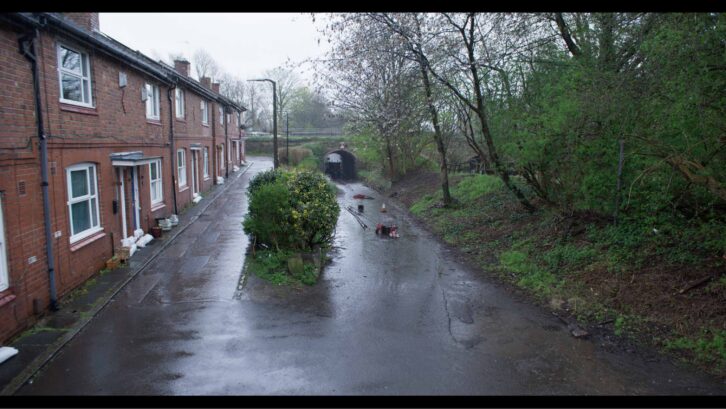
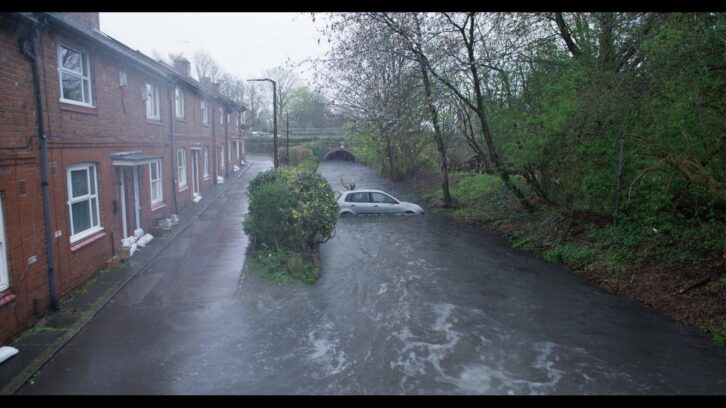
Along with building a full village environment, Vine FX incorporated CGI elements such as trees, cars, and buildings to give the sense of a lived-in place. The team also included personal belongings in the back of cars. “We made a huge library of assets, things like garden furniture and litter, cars, trees, bushes, and ivy that we could use on the buildings. Those small details are what people don’t usually take to be CGI, but it’s absolutely crucial to making a believable scene,” McKinney adds. “You get to a point where it doesn’t look artificial because there’s just so much in there.”
During the flooding sequences, people are caught in fast-moving, dangerous water – from drivers becoming stuck in cars to a baby being swept away. To accomplish this, Vine FX turned to its trusted compositing software, Nuke, and some AI-powered tracking plugins. Achieving an accurate 3D track of the prop baby proved challenging, with water and other practical elements often occluding the carrier and hindering the track.
One of the challenges was identifying matte lines that didn’t naturally exist. “We had to invent areas where a roof or guttering would typically be so we could seamlessly blend live-action footage with computer-generated imagery,” adds Newton. “Then we added those items in to hide any joins. Visual effects is about staying invisible, working with in-camera footage. And when you have a show that gives the right amount of attention to production and post production, it’s going to be something special.”
After the Flood is available on ITVX.
